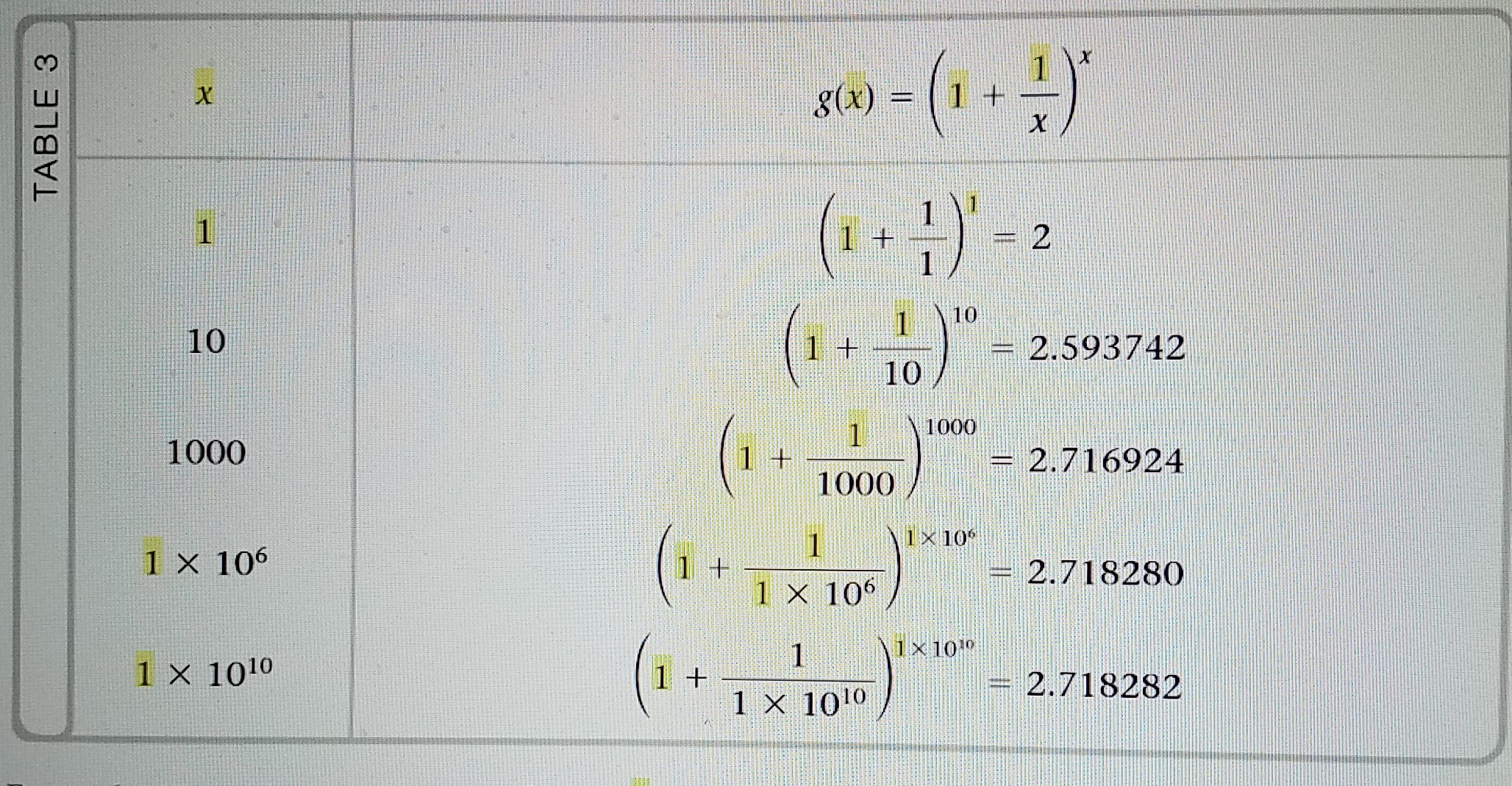Lim (x->inf) of [ (1+1/x)^x] how to explain it via calculator explanation and/or implications/applications?
So I have a project that's due about this limit and I am really having trouble on how to explain it via using a calculator and any implications or applications that can be used in real life or how it can help in other math subjects!! thanks in advance
So I have a project that's due about this limit and I am really having trouble on how to explain it via using a calculator and any implications or applications that can be used in real life or how it can help in other math subjects!! thanks in advance
1 Answer
Please see below.
Explanation:
.
When
L'Hopital's rule says that if
then
Now, we can plug in
Using the exponential rule for
If you use your calculator, you can begin with
You will begin to see the trend that the value of the function, as

The applications of this are in calculating values that other types of series converge to in calculus. In real life, as an Electronics Engineer, I know that it is used in estimating what is called the "Steady-State Error" of functions in Control Systems Engineering problems, Reliability Engineering Problems, Current and Voltage dissipation of electronic components, etc.
There are probably applications in other fields such as financial calculations for rates of return of certain investments, and analysis of performance over time with steadily reducing rates of return; as well as in other scientific fields.

